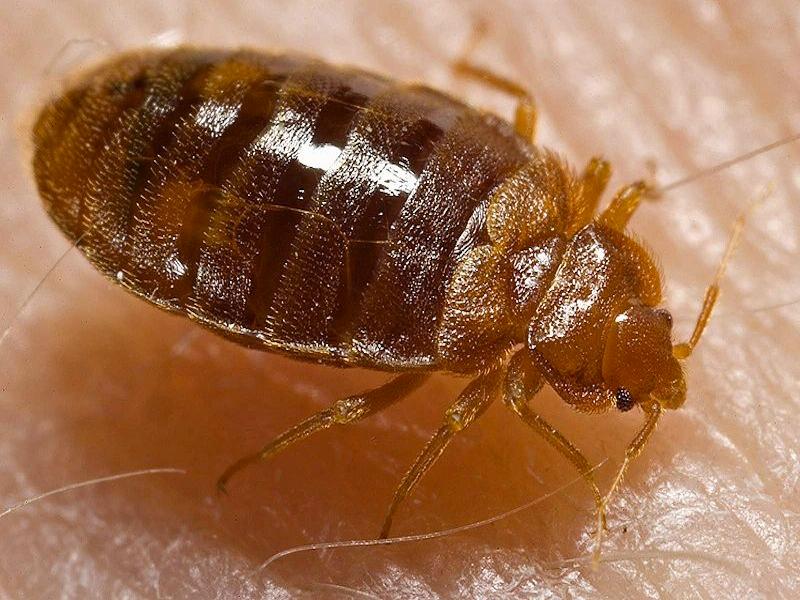How to fight bed bugs without using poisonous chemicals
Photo of a bed bug (Image by the United States Department of Health and Human Services)
Story by Ingrid Lobet for Living on Earth. Listen to audio above for full interview.
Bed bugs are on the rise in the United States. And while they don’t transmit disease, the creepy crawlers can leave you creeped out and wide awake with a bunch of bite marks on your body. Some people are so desperate to get rid of the little bloodsuckers, they’re making themselves sick.
It’s a huge amount of work, and can cost a lot of money to get rid of bedbugs. It involves laundering everything that can be washed in hot water, and sometimes getting rid of mattresses and furniture. People may go through this ordeal when they’re short of sleep, if the bugs are keeping them awake at night. It’s a recipe for desperation.
“Some people were using sprays — spraying their beds or using these total release foggers in their bedrooms, and climbing into bed without, you know, taking the bedding off, and washing it,” Geoffrey Calvert, a senior medical officer at the National Institute for Occupational Safety and Health in Cincinnati, told Living on Earth. And that desperation is beginning to show up in cases of insecticide poisoning.
Calvert found 111 cases over an 8-year period in which people were poisoned while trying to get rid of bedbugs. Most had headaches, nausea, flu symptoms. One woman died. The numbers are small, but represent data from only 7 states, and only cases where someone went to a doctor or called poison control, so they probably reflect only a slice of the actual illnesses.
“Bedbug populations in our country are increasing,” Calvert says, “we’re hearing about more and more infestations, and we’ve noticed that with each year, the number of cases are increasing. And we’ve identified the most number of cases in 2010. So it’s becoming more and more of a problem.”
Most of the illnesses came from exposure to pyrethroids, a class of chemicals regarded as relatively benign for humans when used as directed. There are ways to get rid of bedbugs besides insecticides, and one reason to use alternatives is that the bugs are becoming resistant to the chemicals. Alternatives include forced steam, hot water washing, vacuuming, spreading diatomaceous earth, even heating whole houses up to 130 degrees.
The fact is, though, “eradicating bedbugs is very difficult,” according Calvert. Bottom line, if you’re going to go the chemical route, he says, read the labels carefully, don’t use more than one fogger per room, or, if you can, hire a professional exterminator.
Read the full transcript on the Living on Earth website.
————————————————————
Hosted by Steve Curwood, “Living on Earth” is an award-winning environmental news program that delves into the leading issues affecting the world we inhabit. More about “Living on Earth.”
